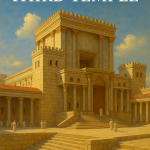The Day of the Lord: Tribulation as the Final Day Before Judgment
In biblical prophecy, the “Day of the Lord” is not a single 24-hour period but a divine epoch — the culmination of judgment, purification, and transformation. According to 2 Peter 3:8, “With the Lord a day is like a thousand years, and a thousand years are like a day.” This verse forms the framework of amillennial and symbolic interpretations of the so-called “millennium.”
Thus, the thousand-year reign described in Revelation 20 is best understood not as a literal future utopia on earth but as the spiritual reign of Christ from heaven over His saints — a day of divine governance coinciding with the tribulation and unfolding over history. This reign is invisible to the world but real to the redeemed. During this time, Christ rules in righteousness, and the Church — including the resurrected and raptured saints — reigns with Him in the heavenly realms (Ephesians 2:6).
The First Resurrection: The Rapture of the Saints
The first resurrection is intimately tied to the Rapture — the event where the dead in Christ are raised and the living believers are transformed and taken up. 1 Thessalonians 4:16–17 declares:
“For the Lord Himself will descend from heaven with a shout, with the voice of an archangel, and with the trumpet of God. And the dead in Christ will rise first. Then we who are alive and remain shall be caught up together with them in the clouds to meet the Lord in the air.”
This moment marks the beginning of the Day of the Lord — the tribulation. It is the escape and elevation of the faithful. Revelation 20:6 calls this the “first resurrection,” stating:
“Blessed and holy is he who has part in the first resurrection. Over such the second death has no power, but they shall be priests of God and of Christ and shall reign with Him a thousand years.”
These saints — caught up in the clouds — do not escape reality, but reign in spiritual authority while the tribulation unfolds below.
The Reign of Saints in Heaven During the Tribulation
While the world undergoes judgment and chaos during the tribulation, the saints are not idle. Revelation 6:9–11 speaks of the souls under the altar crying out for justice, and Revelation 7:9–17 reveals a multitude from every nation standing before the throne in white robes — a sign of victory and purity.
Revelation 20:4 supports this heavenly reign:
“And I saw thrones, and they sat on them, and judgment was committed to them… And they lived and reigned with Christ for a thousand years.”
This is not an earthly reign, but a priestly and intercessory reign, influencing the spiritual dynamics of the unfolding tribulation. Saints reign with Christ in heavenly places, administering the spiritual government of God over the earth as judgments fall and redemption draws near.
The Second Resurrection: Yom Kippur and Final Judgment
Yom Kippur — the Day of Atonement — is the most solemn day on the biblical calendar, symbolizing repentance, covering, and judgment. It foreshadows the final resurrection of all souls for judgment.
Revelation 20:11–15 describes this event:
“Then I saw a great white throne and Him who sat on it… And I saw the dead, small and great, standing before God, and books were opened… And the dead were judged according to their works.”
This second resurrection is for those not part of the first — those who rejected truth or were never transformed. It aligns with Yom Kippur because it is a day of reckoning — a divine court session in which all secrets are revealed, and justice is served.
Conclusion: A Unified Timeline of Redemption
- The Day of the Lord begins with the Rapture — the first resurrection of the saints.
- This ushers in the spiritual reign of the saints in heaven and the tribulation on earth.
- The tribulation is the purifying fire, the final testing of the world.
- At the end, Yom Kippur becomes the Day of Judgment — the second resurrection and the final verdict.


